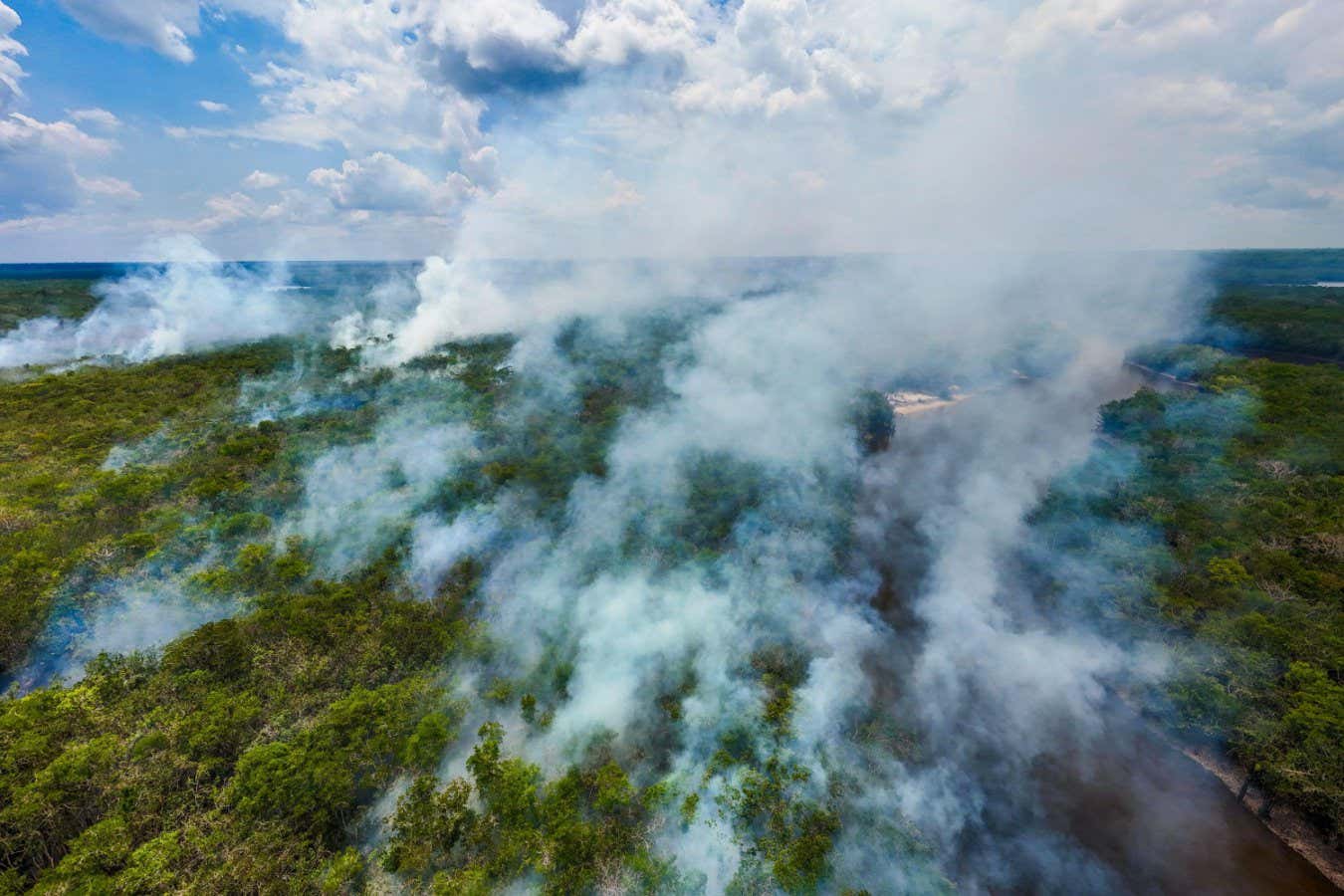
A wildfire burning in the Amazon rainforest
Fernando Lessa/Alamy
Many of the forest-based carbon-offset schemes certified by the world’s largest carbon registry, Verra, may be at risk of becoming useless due to wildfires or other disturbances releasing the carbon they store back into the atmosphere.
A forest-based carbon-offset project involves protecting or replanting forests to generate carbon credits, which can then be sold to companies or individuals to offset their greenhouse gas emissions. Such projects are supposed to set aside “buffer pools” of unsold carbon credits as a form of insurance against future carbon losses, such as when trees are destroyed by wildfires, insects or storms. But an analysis of these buffer pools shows carbon-offset schemes probably don’t set aside enough.
“The numbers aren’t actually based on any science, as far as anyone can tell,” says William Anderegg at the University of Utah. A Verra spokesperson defended the organisation’s approach, saying decisions about the size of buffer pools are “grounded in a robust science-based risk assessment” and that projects that do dip into the buffer must replenish what they take.
Buffer pools are especially an issue when forest-based carbon credits are sold to offset carbon emissions from burning fossil fuels, which remain in the atmosphere for centuries to millennia. “If you’re going to try to lock up that carbon in a bunch of trees, you’re going to have to guarantee that the carbon stays there for a very long time,” says Anderegg.
In theory, a sufficiently large buffer pool offers that guarantee by protecting enough carbon to make up for any that might be lost during decades of disturbances. But earlier work by Anderegg and his colleagues found that forest carbon projects certified by Verra have set aside just 2 per cent of credits, on average, as insurance against natural risks.
To determine whether this is a sufficient amount, Anderegg and his colleagues used an ecological model to estimate the size of the buffer that would be required to adequately balance out the risk of natural disturbances in various types of tropical forest. They compared their results against the buffer pools now required for Verra’s certification.
They found that Verra’s requirements are far too small to guarantee permanent carbon storage in almost all scenarios. In some cases, they are more than 11 times smaller than what would be needed. “For these natural risks, [the buffer] needs to be at least double, maybe more than double, to be adequate,” says Anderegg.
The Verra spokesperson says few of the 76 million carbon credits currently in the buffer pool have been used, which indicates “the buffer has not been ‘swamped’ by reversals to date”. “Its effectiveness is demonstrated by the way the buffer pool has been maintained over time, even amid the risk of reversals,” says the spokesperson.
Buffer pools aren’t just a consideration for Verra. For instance, a carbon-offset programme managed by the state of California has seen wildfires over just the past few years eat up large chunks of its buffer pool, which was meant to last for a century.
This issue is only expected to grow as global warming intensifies forest carbon loss. “If you want to guarantee permanence over 100 years, you need to ensure your buffer is big enough to deal with a lot of climate change,” says Anderegg.
Topics:
Source link : https://www.newscientist.com/article/2486843-carbon-offset-schemes-arent-prepared-for-forests-to-burn/?utm_campaign=RSS%7CNSNS&utm_source=NSNS&utm_medium=RSS&utm_content=home
Author :
Publish date : 2025-07-04 12:00:00
Copyright for syndicated content belongs to the linked Source.